Food influencers have become a trusted source for recipes, product recommendations, and everyday meal inspiration. Whether it’s a quick recipe on TikTok or a detailed cooking tutorial on YouTube, these creators shape how people discover and engage with food brands. For companies in the food and beverage space, partnering with the right food influencers can lead to stronger reach, better engagement, and authentic connections with target audiences.
This guide features 15 top food influencers to follow in 2025. Covering Instagram, TikTok, and YouTube, each one offers a unique approach, loyal community, and content style that appeals to both casual cooks and passionate food lovers. These profiles are not just popular, they are well-positioned for meaningful brand collaborations.
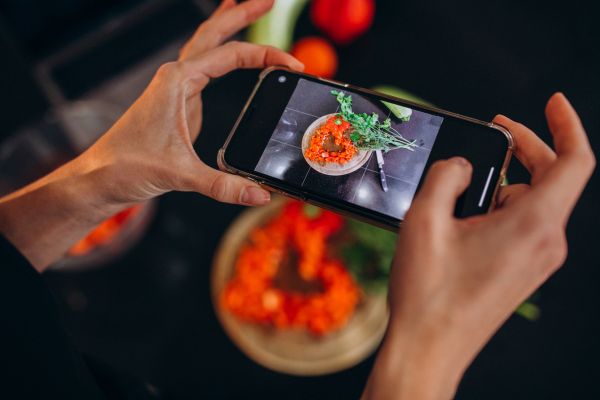
Top 15 Food Influencers Across Platforms
The following food influencers have built strong communities across Instagram, TikTok, and YouTube. They combine creativity with trust, and their content reaches audiences that care about what they eat and how they prepare it. These creators stand out for their originality, consistency, and ability to drive real engagement, making them ideal partners for brands in the food and beverage space.
Instagram Food Influencers
1. Food With Michel
- Platform: Instagram
- Followers: 347K
- Bio: Michelin-trained chef sharing gourmet recipes.
- Why He Stands Out: Combines high-end culinary training with social-first presentation. His content offers professional tips alongside beautifully shot dishes.
- @foodwithmichel
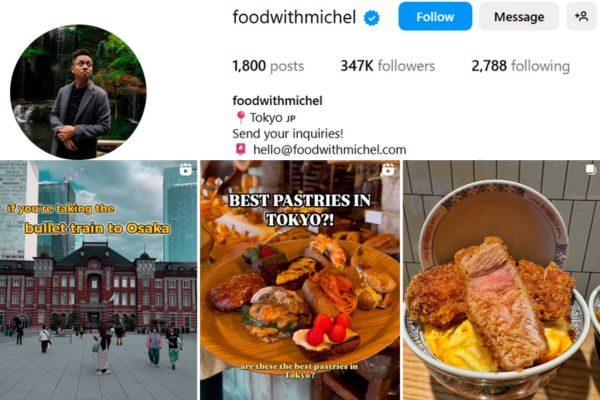
2. Tieghan Gerard
- Platform: Instagram
- Followers: 5.5M
- Bio: Creates cozy, comfort food recipes with seasonal ingredients.
- Why She Stands Out: Known for unique flavor combinations, detailed styling, and stunning photography that elevates everyday meals.
- @halfbakedharvest

3. Sarah
- Platform: Instagram
- Followers: 1M
- Bio: Food stylist & recipe developer. Turning simple ingredients into vibrant meals.
- Why She Stands Out: Sarah’s feed features bold, colorful plating with a focus on fresh, whole ingredients, making even basic dishes visually striking.
- @groovyfoodiess
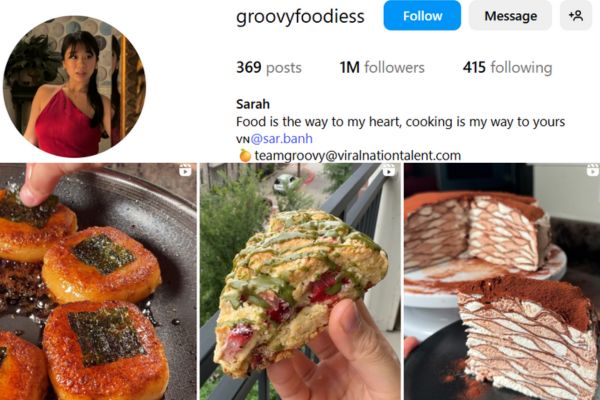
4. Danielle Brown
- Platform: Instagram
- Followers: 5.3M
- Bio: Plant-based chef & NYT bestselling author | Easy vegan recipes that don’t skimp on flavor | Meal prep & wellness tips
- Why She Stands Out: Makes plant-based eating approachable with indulgent yet healthy recipes (e.g., “Vegan Mac & Cheese,” “Decadent No-Bake Desserts”). Shares 30-minute meals and budget-friendly grocery hauls, resonating with busy professionals.
- @healthygirlkitchen
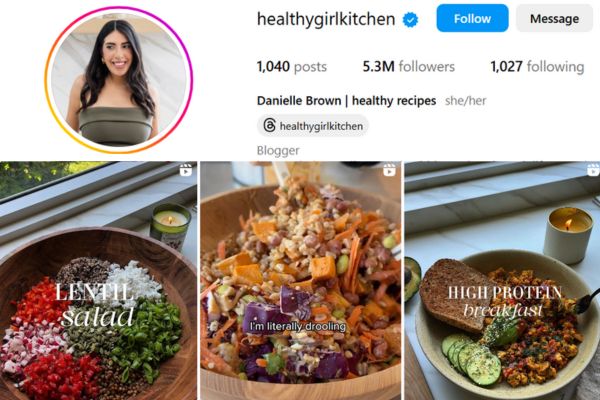
5. The Feed Feed
- Platform: Instagram
- Followers: 2.4M
- Bio: Community-based account sharing recipes from home cooks and chefs.
- Why It Stands Out: Features diverse cuisines and user-generated content, making it ideal for brands looking to reach varied audiences.
- @thefeedfeed

YouTube Food Influencers
6. Binging with Babish (Andrew Rea)
- Platform: YouTube
- Followers: 9.8M
- Bio: Recreates iconic dishes from films and television shows.
- Why He Stands Out: Merges food and pop culture with cinematic visuals and storytelling.
- Binging with Babish
7. Joshua Weissman
- Platform: YouTube
- Followers: 10.2M
- Bio: Combines traditional cooking with entertaining, no-nonsense tutorials.
- Why He Stands Out: Energetic delivery and step-by-step breakdowns make pro-level meals feel accessible.
- Joshua Weissman
8. Maangchi
- Platform: YouTube
- Followers: 6.46M
- Bio: Specializes in Korean recipes with a warm, teaching tone.
- Why She Stands Out: Shares authentic Korean cuisine and makes cultural dishes approachable for global audiences.
- @Maangchi
9. Tasty
- Platform: YouTube
- Followers: 21.4M
- Bio: BuzzFeed’s flagship food brand offering fast-paced recipe videos.
- Why It Stands Out: Consistently delivers trend-driven, highly shareable content at scale.
- Tasty on YouTube
10. LifebyMikeG
- Platform: YouTube
- Followers: 4.94M
- Bio: Helps viewers cook like a pro without a restaurant kitchen.
- Why He Stands Out: Offers practical, budget-conscious recipes ideal for home cooks looking to improve their skills.
- @LifebyMikeG
TikTok Food Influencers
11. Jordan Howlett
- Platform: TikTok
- Followers: 14.2M
- Bio: Fast-food hacks & viral recipe remixes | Secret menu decoder | Breaking down your fast-food cravings
- Why He Stands Out: Specializes in decoding secret menu items (e.g., “Starbucks Pink Drink Dupe”) and chain restaurant hacks, appealing to Gen Z/millennial audiences. Uses humor and behind-the-counter insights (from past food service jobs) to add credibility and relatability.
- @jordan_the_stallion8
12. Eitan Bernath
- Platform: TikTok
- Followers: 2.3M
- Bio: High-energy creator sharing fast, fun food hacks and recipes.
- Why He Stands Out: Blends humor, accessibility, and culinary creativity in short-form video.
- @eitan
13. Sam Way
- Platform: TikTok
- Followers: 9.9M
- Bio: British chef and food creator known for cinematic recipe videos and minimalist cooking tutorials.
- Why He Stands Out: His calming voiceovers, clean visual style, and simple yet elegant recipes make his content both relaxing and engaging. Popular among viewers looking for recipe inspiration with a refined touch.
- @davidchang
14. Lynja
- Platform: TikTok
- Followers: 22.1M
- Bio: Quirky grandmother with viral, fast-paced cooking videos.
- Why She Stands Out: Her humorous, wholesome content has built a multigenerational audience.
- @cookingwithlynja
15. The Kitchn
- Platform: TikTok
- Followers: 316.8K
- Bio: Home cooking content from the editors at Kitchn.
- Why It Stands Out: Offers reliable, easy-to-follow recipes backed by a trusted editorial team.
- @thekitchn
The Power of Food Influencers in Modern Marketing
Food influencers have become a key asset in modern brand strategy. They go beyond showcasing meals, they build trust, shape trends, and influence purchasing decisions in ways traditional advertising often can’t match.
Here’s how food creators are redefining the landscape:
- They make food feel personal and relatable
- They help products and dishes go viral
- They drive measurable outcomes like restaurant traffic and product sales
- They connect brands with niche and lifestyle-driven audiences
- They act as modern food critics, influencing opinions and preferences
Food influencers play a central role in how consumers discover new ingredients, tools, and dining experiences. Their content mixes entertainment with utility, which makes it ideal for brands looking to create deeper engagement. From short-form TikToks to long-form recipe videos, their influence spans every major digital platform.
A key factor behind their impact is trust. Their followers often rely on them for honest feedback and relatable, experience-based content. When an influencer develops a recipe around a product or tests it in real-time, the recommendation carries more weight than a traditional ad.
For brands, this creates powerful marketing opportunities. Partnering with food influencers can enhance visibility, strengthen customer relationships, and even drive direct sales. Their ability to build compelling narratives around ingredients or kitchen tools turns branded content into something people actually want to watch and act on.
Why Collaborate With Food Influencers?
Food influencers aren’t just about keeping up with food culture. For brands, it’s a window into real-time consumer behavior, emerging trends, and credible product advocacy. These creators have changed how people discover and engage with food. Here’s how that translates into strategic value:
1. Proven, User-Ready Recipes
Influencers deliver curated recipes that range from everyday meals to advanced techniques, all visually demonstrated across platforms like TikTok, Instagram, and YouTube, making them ideal for promoting ingredients or tools in context.
2. Credible Reviews of Products and Restaurants
Many creators conduct in-depth evaluations of kitchen gear, grocery brands, and dining venues. Their content often covers underrepresented restaurants and emerging products that don’t get mainstream attention, which helps brands build awareness organically.
3. Trend Acceleration
Food influencers are early adopters. They often ignite viral trends, introduce new ingredients (e.g., adaptogens or specialty flours), or redefine plating aesthetics, providing an opportunity for brands to ride that momentum with timely partnerships.
4. Actionable Culinary Education
They offer practical techniques; time-saving hacks, and professional skills adapted for the home kitchen, that educate and engage audiences, positioning products as part of a useful, value-driven experience.
5. Niche Dietary Alignment
Many food influencers specialize in specific dietary needs (plant-based, keto, gluten-free), making them highly relevant for brands targeting wellness or lifestyle-driven categories.
6. Community Engagement and Exposure
Live sessions, collaborative events, and active comment threads create dialogue around content. For brands, this adds a layer of interactive exposure and word-of-mouth momentum that builds brand credibility over time.
5. Track Results and Optimize
After the campaign, review data like reach, saves, clicks, conversions, and sentiment. Compare results against benchmarks and use insights to refine your approach. Influencer partnerships often perform best when tested, iterated, and built upon over time.
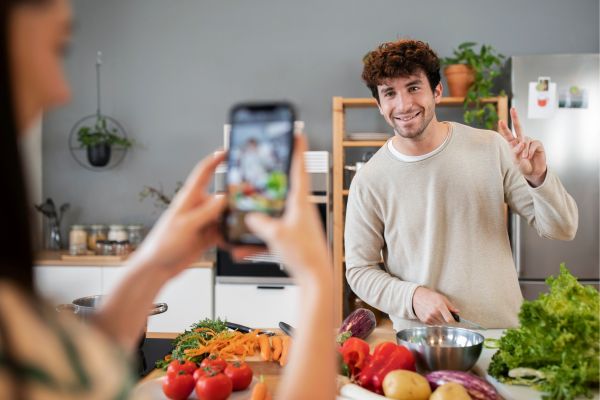
Strategies for Collaborating with Food Influencers
Partnering with food influencers gives brands access to highly engaged, culinary-focused audiences. But the real results come from thoughtful strategy, the right fit, and collaborative execution.
Identify the Right Influencers for Your Brand
Not every food influencer is the right fit for every product. Start by reviewing the influencer’s audience demographics, content style, and values. Consider their expertise, some focus on gourmet meals, others on budget cooking or wellness. Look beyond follower count and evaluate engagement, authenticity, and relevance to your product category.
Define Goals and Collaboration Type
Establish clear campaign goals before reaching out. Are you aiming for brand awareness, traffic, product reviews, or user-generated content? Based on this, choose the right format: sponsored posts, recipe integrations, giveaways, or long-term ambassadorships. Each option offers different benefits depending on your objectives.
Give Creative Freedom
Food creators often know what resonates best with their audience. While it’s helpful to provide product information and key talking points, allowing influencers to adapt the message in their own voice results in more authentic content. This trust can also lead to higher engagement and better performance.
Use Tools to Streamline Campaign Management
Managing influencer partnerships at scale requires the right tools. Platforms like Hypefy help brands discover food creators, automate outreach, track campaign performance, and handle payments, all in one place. This reduces time spent on coordination and improves campaign efficiency.
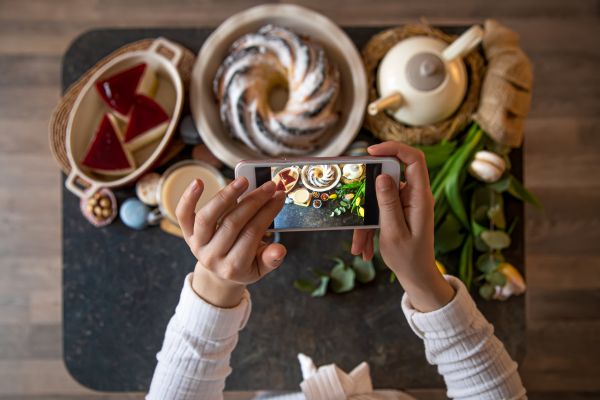
From Discovery to Activation
Successful collaborations start with the right connection and the right partner to help you manage it. With the right strategy, brands can form lasting partnerships that go beyond product placement and drive meaningful results.
If you are looking for the best Food Influencers to partner with, start with curated insights, not guesswork. Use discover.hypefy.ai to instantly access a list of top-performing creators filtered by niche, country, and monthly budget. And, if you need more options, sign up for free and get a fully personalized list matched to your exact product, audience, and campaign goals.
To simplify the process of finding and working with creators, explore tools like the Hypefy Influencer Marketplace, manage campaign payouts securely, or get full support from our Influencer Marketing Agency.



